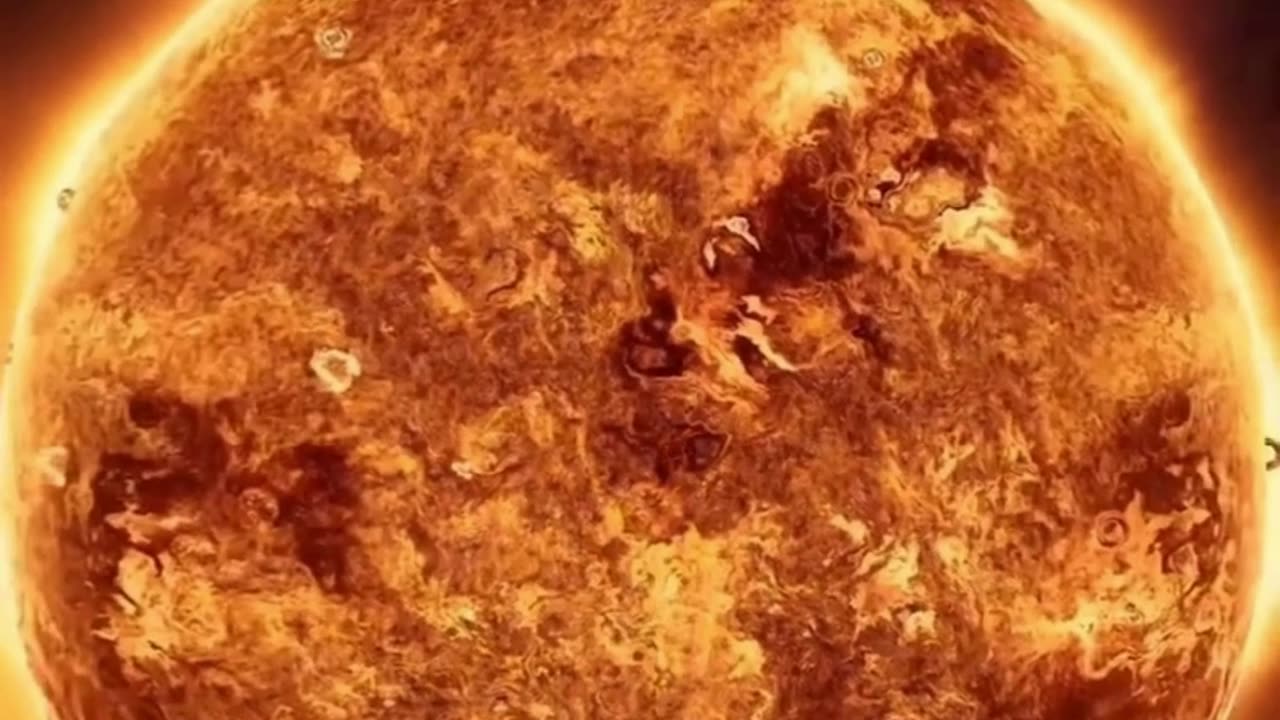Premium Only Content

🌞 The Sun: Our Solar System's Mighty Middleweight! 🌟 | Epic Space Size Comparison |
The sun is our solar system's most massive object, but what size is it ☀️ ?
It is the largest object in the solar system, but how big is the sun when compared to the rest of the stars in the Milky Way galaxy? The sun is classified as medium-sized among these hundreds of billions of stars.
The sun is nearly a perfect sphere. Its equatorial diameter and its polar diameter differ by only 6.2 miles (10 km). The mean radius of the sun is 432,450 miles (696,000 kilometers), which makes its diameter about 864,938 miles (1.392 million km). You could line up 109 Earths across the face of the sun, according to NASA. The sun's circumference is about 2,715,396 miles (4,370,006 km).
It may be the biggest thing in this neighborhood, but the sun is just average compared to other stars. Betelgeuse, a red giant, is about 700 times bigger than the sun and about 14,000 times brighter.
"We have found stars that are 100 times bigger in diameter than our sun. Truly those stars are enormous," NASA says on its SpacePlace website. "We have also seen stars that are just a tenth the size of our sun."
According to NASA's solar scientist C. Alex Young, if the sun were hollow, it would take about one million Earths to fill it.
MASS AND VOLUME
The total volume of the sun is 1.4 x 1027cubic meters. About 1.3 million Earths could fit inside the sun, according to NASA's statistics. The mass of the sun is 1.989 x 1030 kilograms, about 333,000 times the mass of the Earth. The sun contains 99.8 percent of the mass of the entire solar system, leading astronomers Imke de Pater and Jack J. Lissauer, authors of the textbook Planetary Sciences, to refer to the solar system as "the sun plus some debris".
#deepspace #nasa #nasawebb #nebula #interstellar #space #reelsvideos #astro #space #blackhole #galaxy #reels #cosmos #universe #astronomy #telescope #darkmatter #spaceexploration #celestial #✨️
-
 1:29:13
1:29:13
I_Came_With_Fire_Podcast
13 hours agoAncient Egypt's Tech & the Secret Temples of Malta
17.2K2 -
 LIVE
LIVE
GritsGG
3 hours agoWin Streaking! Most Wins 3499+ 🧠
130 watching -
 DVR
DVR
Bannons War Room
6 months agoWarRoom Live
34.1M8K -
 LIVE
LIVE
ttvglamourx
3 hours ago $1.01 earnedPLAYING WITH VIEWERS !DISCORD
97 watching -
 1:21:38
1:21:38
VapinGamers
3 hours ago $1.95 earnedTools of the Trade - EP04 Of Thumbnails and Titles, What's Important? - !rumbot !music
23.5K1 -
![Mr & Mrs X - [DS] Trafficking Empire – How Epstein Built His Web of Wealth and Deceit:Part 1 - Ep 5](https://1a-1791.com/video/fww1/f0/s8/1/o/k/J/d/okJdz.0kob-small-Mr-and-Mrs-X-DS-Trafficking.jpg) 52:11
52:11
X22 Report
5 hours agoMr & Mrs X - [DS] Trafficking Empire – How Epstein Built His Web of Wealth and Deceit:Part 1 - Ep 5
88.1K24 -
 1:13:18
1:13:18
Wendy Bell Radio
9 hours agoPet Talk With The Pet Doc
58.4K74 -
 5:54:39
5:54:39
dieseldesigns
7 hours agoExploring Labs In the DARK! // Abiotic factor
13.9K -
 LIVE
LIVE
BBQPenguin_
6 hours agoDragonball Z - The Android Saga
82 watching -
 LIVE
LIVE
Total Horse Channel
7 hours ago2025 URCHA Futurity | Derby & Horse Show | Saturday
25 watching